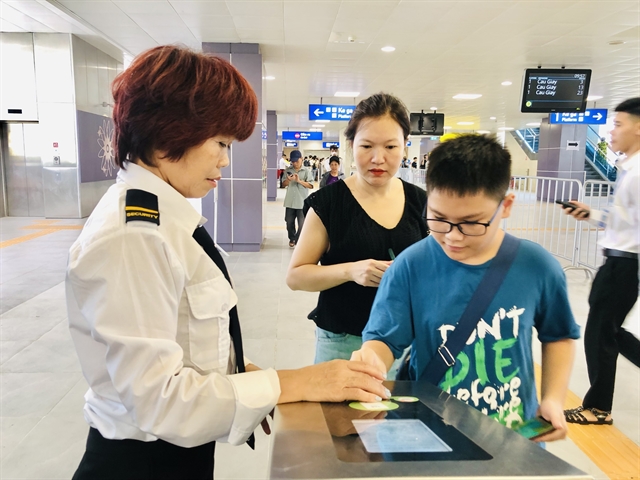 Opinion
Opinion

 |
| Hà Nội's commuters go through a ticket scanning machine of the freshly-launched Nhổn-Hà Nội Station metro line. VNA/VNS Photo |
Professor Lê Hùng Lân, former director of the National Centre for Technological Progress under the Ministry of Science and Technology, speaks to Voice of Vietnam about how the intelligent transport systems have facilitated urban railway commuters.
Hà Nội recently launched a new urban train line. How well do you think urban railroads can serve commuter demand for travel?
We may quickly identify the limitations if we compare the current state of urban trains with the needs of the populace.
Commuters are concerned about two things. Firstly, the transportation system needs to be able to get passengers to their destination. Second, it needs to meet the standards for travel quality, which include being quick, easy, safe and affordable.
When comparing the urban train system in the capital city, flaws like an excessive number of lines, a short length and illogical routes are apparent, which contributes to the poor level of satisfaction.
What needs to be done, in your opinion, for the urban railway system to attract passengers?
In addition to lengthening the route, adding more routes and changing up the models, it's important to consider route planning, where stations should be placed in relation to densely populated areas, such as offices, schools, entertainment venues, shopping centres, train and bus stations and airports.
Second, we must integrate the urban rail network with other transportation options, including buses and taxis. This is crucial as Hà Nội's urban train system is small and unable to guarantee that passengers will get to their destinations.
Third, to enable commuters to locate essential and practical routes, there needs to be a greater push to broadcast traffic information to the public.
How would intelligent transportation systems help people use urban trains, given such requirements?
Intelligent transportation systems promote the efficiency of not only urban railways but also the entire city’s transportation system.
Urban railways are directly connected to three systems: public transit management, electronic ticket payment administration, and traffic information provision.
The traffic information system gives commuters access to essential real-time traffic route information as well as advice on the best and most appropriate routes to take.
We can use electronic information boards at stations and on cars and city traffic maps.
Urban railway routes, suitable departure times and train itineraries can all be found and chosen by commuters.
To complete the journey, passengers can also obtain information on other forms of transportation, such as buses, taxis, and bike rentals, that can get them to the station and from there to their destination.
The public transportation management system enables management and operating agencies to arrange vehicles to minimise waiting times, maximise convenience, and minimise passengers' expenses.
By using a smartphone to scan tickets instead of cash, commuters can pay online for any public transportation (bus, rail) thanks to the electronic ticket payment management system. VNS




